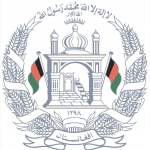Afghanistan has historically been the link between Central Asia, the Middle East, and the Indian subcontinent. The written history of Afghanistan can be traced back to around 500 BC when the area was under the First Persian Empire. Afghanistan (meaning “land of the Afghans”) has been a strategically important location throughout history. The region represented “a gateway to India”, impinging on the ancient Silk Road, which carried goods from the Mediterranean to China. Afghanistan is a nation that has been beset by invasion, external pressure, and internal upheaval since before the time of Alexander the Great. Islam was brought to Afghanistan during the eighth and ninth centuries by the Arabs. Prior to that, Afghanistan had been ruled by various Persian, Greek, Sassasian, and Central Asian empires. Following a subsequent breakdown in Arab rule, semi-independent states began to form. These local dynasties and states however were overwhelmed and crushed during the Mongolian invasions of the 1200s – conquerors who were to remain in control of part or all of the country until the 1500s, despite much resistance and internal strife. Beginning in the 1800s Afghanistan’s internal affairs became dramatically aggravated by the increasing intervention by two new imperialist powers – the British Empire and Czarist Russia. King Amanullah Khan declared the country’s independence in 1919 and was the first to implement a policy of modernization in Afghanistan. He introduced the country’s first constitution in 1923. Furthermore, elementary education was made compulsory. The power of religious leaders was curtailed, the traditional veil for women was abolished and co-educational schools were introduced. Years later Mohammad Zahir Shah succeeded to the throne and reigned from 1933 to 1973. In 1964, King Zahir Shah promulgated a liberal constitution that established a two-chamber legislature. That would come to be known as a decade of democracy in our history. Other major historical events following this are the Saur Revolution from 1978 when the Afghan Communist Party overtook the government in a military coup. In the decades that followed the country experienced war and political instability. Shortly after the Soviet retreat religious groups such as the Taliban took control over key regions of the country and gradually increased their spheres of influence over most regions. Once in power, the Taliban sought to create a theocratic state based on their strict interpretations of the Koran. The veil became the law of the land, and women were forbidden from attending school or holding employment outside of the home. The country became politically and diplomatically isolated.
The UNCS Resolution 1386 from 2001 to oust the Taliban and al-Qaeda from Afghanistan was the latest manifestation of a conflict that had been running for nearly three decades. In December 2001 leaders from the Afghan opposition and diaspora met in Bonn, Germany, and drew up plans for a political transition starting with a provisional government structure.
Afghanistan adopted its new constitution, which established the country as an Islamic Republic, in early January 2004. According to the constitution, the Afghan government consists of a powerful and popularly elected President, two Vice Presidents, and a National Assembly consisting of two Houses: the House of People (Wolesi Jirga), and the House of Elders (Meshrano Jirga). There is also an independent Judiciary branch consisting of the Supreme Court (Stera Mahkama), High Courts, and Appeal Courts. The President appoints the members of the Supreme Court with the approval of the Wolesi Jirga.
Since the fall of the Taliban, Afghanistan has witnessed the growth of civil society, populated largely by educated Afghans, many of whom returned to Afghanistan from exile when the Taliban fell. Organizations and groups centered on various issues, including women’s rights, law and justice, media freedoms, economics and business issues, the environment, and others, have proliferated.
Afghanistan is also a signatory of many international conventions and treaties and a member of several international and regional organizations.
